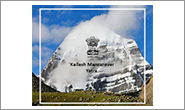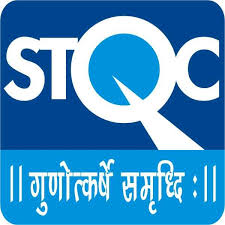Article in China Daily: Sino -Indian relations offer opportunity: Ambassador 01/05/2016
Sino-Indian relations offer opportunity: Ambassador
Editor's note: Ashok K. Kantha, Indian ambassador to China, is preparing to leave China on Thursday after a successful two-year tenure. Mr. Kantha has witnessed improved communication between the leaders of China and India. The ambassador wrote an article exclusively for China Daily ahead of his farewell.
I recently had the opportunity to interact with students and faculty from Peking University, during which I recalled my first visit to that university way back in 1982. At that time, there were barely a dozen Indian students in China; today, there are some 14,000 Indians studying here. During the intensive interaction, I was struck by the high level of warmth and interest displayed towards India. For me, this was a potent symbol of the journey our two neighboring countries have traveled in the recent past and was also a strong indicator of the fundamental potential of closer engagement.
As we enter the year 2016 - and I also complete my assignment in China - it is a time to reflect on the successes of the past year. Today, the re-emergence of the two Asian giants within the same time frame is re-setting the poles of the global architecture - and simultaneously imparting immense new strategic opportunities for both sides, and indeed for Asia and the world as a whole. During his visit to India in September 2014, President Xi Jinping emphasized, "China and India have a combined population of over 2.5 billion. If we speak with one voice, the whole world will listen, and if we join hands, the whole world will pay attention". On that occasion, our leaders articulated the vision of closer developmental partnership between India and China.
Prime Minister Narendra Modi's visit to China in May 2015 took up the momentum strongly. The two visits showcased the high level of personal rapport between our leaders and coined a new term - "hometown diplomacy". Prime Minister Modi has met with President Xi and Premier Li Keqiang as many as eight times over the last eighteen months. Combined with other high-level visits in both directions, including the visits of the external affairs minister and home minister of India to China and that of NPC Chairman Zhang Dejiang, Vice-President Li Yuanchao and Vice-Chairman of Central Military Commission Fan Changlong to India, there is a clear strategic intent to diversify and deepen our engagement.
At the bilateral level, the developmental partnership translates into exciting new opportunities for businesses on both sides. New initiatives in industrial parks, railways and smart cities are making good progress. India strongly welcomes Chinese participation in our development campaigns, such as Make in India, Digital India, and Smart Cities. We are happy to note that investments from China are flowing into India.
Indian companies too can play a greater role in China's strategic initiatives such as 'Made in China 2025' and Digital China, which stress innovation and R&D. India's strengths in Information Technology and knowledge industries converge well with these aspirations. Also, India is a global lead player in pharmaceuticals and can slot into China's health strategy. With asymmetrical trade a mutual concern, such initiatives can make economic engagement more sustainable.
To broaden our partnership further, our leaders established the India-China States/Provincial Leaders' Forum during Prime Minister Modi's visit in 2015, the first such initiative that India has taken with another country. India's Ministry of External Affairs and the International Department of the CPC Central Committee entered into a unique Memorandum of Understanding to promote exchanges at the level of state and provincial leaders and leaders of the CPC. Besides, 10 pairs of sister-state/sister-city relations are already functional. Many state and provincial leaders are undertaking visits in both directions and strengthening cooperation. During my travels in China, I have always been impressed with the warmth, friendship and keen interest of local leaders towards India, and I am sure this would translate into more active cooperation on the ground.
As both our countries have historically enjoyed warm and frequent contacts, special attention has been accorded to cultural and people-to-people links. To encourage tourist flows, 2015 was designated as the Visit India Year in China and 2016 will be marked as the Visit China Year in India. Prime Minister Modi also announced the E-tourist Visa for Chinese nationals and this has been implemented since July 30. We were amazed at the enthusiastic response to the International Day of Yoga last June, which was celebrated across 27 cities in China. I am convinced that yoga will find a second home in China.
I am particularly happy that India and China are co-producing three feature films through a unique and innovative arrangement. I am greatly looking forward to the first of them on Xuan Zang's travels to India, which will be released during the coming Chinese New Year.
A key joint strategy is our strong synergy at the global high table. For example, ahead of the Paris COP21, ministers of the two countries consulted with each other, followed by close coordination during the international negotiations. The outcome was positive for both countries. China and India also work together on the G-20 and BRICS groupings, helping shape the global economy and building linkages among emerging economies. I am happy that my country is the second largest participant after China in the Asian Infrastructure Investment Bank (AIIB), and it was an honor for me to represent India at its signing ceremony in Beijing last year.
We do have some unresolved issues between us, of which the boundary question is the most prominent. While we strive for an early resolution of the boundary question as a strategic objective, at the same time, pending an ultimate resolution, we are committed to maintain peace and tranquility along the border areas. As Prime Minister Modi has said, the fact that not a single bullet has been fired for over three decades in the India-China border reflects the maturity of the bilateral relationship. While there may be concerns from both sides on other issues, what is important is that both countries have agreed that, while we seek to address them, we will not let them come in the way of an expanded engagement.
As I end my tenure in Beijing, I take satisfaction from the all-round progress of our relationship. As our prime minister said, "If I have to describe the potential of India-China ties, I will say INCH (India and China) towards MILES (Millennium of Exceptional Synergy)." I am confident that together we will continue to forge ahead shaping the new Asian and global architecture.





























